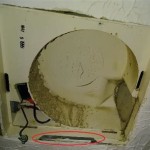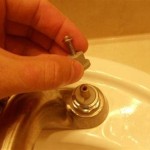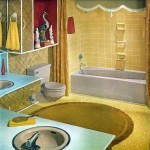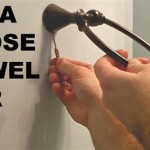How To Install A Vent In Your Bathroom
Bathroom vents are crucial for maintaining a healthy and comfortable environment. They effectively remove excess moisture, preventing mold growth, reducing unpleasant odors, and improving overall air quality. Installing a bathroom vent requires careful planning and execution. This article provides a comprehensive guide to safely and successfully installing a bathroom vent.
Planning and Preparation
Before commencing the installation process, thorough planning is essential. This includes selecting the appropriate vent fan, determining the optimal location, and gathering the necessary tools and materials.
Choosing the Right Vent Fan: Vent fan capacity is measured in cubic feet per minute (CFM). The appropriate CFM rating depends on the bathroom's size. A general rule is to have at least 1 CFM per square foot of bathroom area. For bathrooms larger than 100 square feet, consider a fan with a higher CFM rating or multiple fans. Bathrooms with features like whirlpool tubs or frequently used showers may also require a more powerful fan. Consider factors such as noise level (measured in sones) and additional features like integrated lights or humidity sensors when selecting a fan.
Determining the Vent Location: The ideal location for the vent fan is near the shower or toilet, where moisture and odors are most concentrated. Ensure the location allows for easy access to an electrical source and a suitable pathway for venting to the outside. Avoid placing the vent fan directly above a shower head, as this can reduce its lifespan and effectiveness. Verify that there are no obstructions, such as plumbing or electrical wiring, in the chosen location.
Gathering Tools and Materials: The following tools and materials are typically required for a bathroom vent installation:
- Vent fan kit (including fan housing, grille, and mounting hardware)
- Ducting (rigid or flexible, sized appropriately for the fan)
- Exterior vent cap (with backdraft damper)
- Electrical wiring (compatible with local codes)
- Wire connectors
- Electrical tape
- Screws
- Caulk or sealant
- Drill with various drill bits
- Screwdriver
- Wire stripper/cutter
- Pencil or marker
- Tape measure
- Level
- Safety glasses
- Gloves
- Ladder or step stool
- Stud finder (optional)
- Drywall saw or utility knife
Checking Local Building Codes: Before beginning any work, it is crucial to check local building codes and regulations regarding bathroom ventilation. These codes may specify requirements for CFM ratings, ducting materials, electrical wiring, and venting locations. Failure to comply with local codes can result in fines or necessitate rework.
Installation Process
The installation process involves several steps, beginning with electrical safety precautions and culminating in testing the functionality of the vent fan.
Safety First: Disconnecting the Power: Before commencing any electrical work, it is imperative to disconnect the power supply to the bathroom circuit at the circuit breaker box. This prevents the risk of electric shock, which can be fatal. Verify that the power is off by using a non-contact voltage tester on the wires you will be working with. If you are unsure about any electrical work, consult a qualified electrician.
Cutting the Hole for the Fan Housing: Using the vent fan housing as a template, trace the outline of the hole onto the ceiling where the fan will be installed. Ensure the outline is accurately positioned and aligned. Use a drywall saw or utility knife to carefully cut along the traced line, creating an opening for the fan housing. Take precautions to avoid damaging any wiring or plumbing behind the ceiling.
Installing the Fan Housing: Insert the fan housing into the hole in the ceiling. Secure the housing to the ceiling joists using screws. If necessary, use wood shims to ensure the housing is level and stable. Use a stud finder to locate the joists and drive the screws directly into the joists for maximum support. The fan housing should be firmly attached to the ceiling structure to prevent vibration and noise.
Connecting the Ductwork: Attach the ductwork to the vent fan housing. Secure the ducting with clamps or foil tape to ensure a tight seal. Run the ductwork to the exterior vent cap, minimizing bends and turns to maximize airflow. Use rigid ducting whenever possible, as it provides better airflow than flexible ducting. Insulate the ductwork in unheated or uncooled spaces to prevent condensation.
Installing the Exterior Vent Cap: Install the exterior vent cap on the outside wall or roof. Ensure the cap is properly sealed to prevent water intrusion. Use caulk or sealant around the edges of the cap to create a watertight barrier. The vent cap should be positioned to prevent exhaust air from being drawn back into the house. Avoid positioning the vent cap near windows, doors, or air intakes.
Wiring the Vent Fan: Connect the electrical wiring to the vent fan according to the manufacturer's instructions. Use wire connectors to securely join the wires. Ensure the connections are tight and properly insulated with electrical tape. Follow all local electrical codes and regulations. If the vent fan has a light or other features, connect the wiring accordingly. Double-check all wiring connections before restoring power.
Testing the Installation: After completing the installation, restore power to the circuit at the breaker box. Turn on the vent fan to ensure it is functioning correctly. Check for any unusual noises or vibrations. Verify that the exterior vent cap is opening and closing properly. Use a smoke pencil or tissue to check for airflow at the vent grille in the bathroom. Ensure the fan is effectively removing air from the bathroom.
Troubleshooting and Maintenance
Even with careful installation, issues may arise. Regular maintenance is crucial for ensuring the long-term performance of the bathroom vent fan.
Addressing Common Issues: If the vent fan is not working, first check the circuit breaker to ensure it has not tripped. Verify that all wiring connections are secure. If the fan is making excessive noise, check for loose screws or debris in the fan blades. If the airflow is weak, inspect the ductwork for obstructions or kinks. Ensure the exterior vent cap is not blocked by debris.
Cleaning the Vent Fan: Regular cleaning is essential for maintaining optimal performance. Turn off the power to the vent fan at the breaker box. Remove the grille and clean it with soap and water. Use a vacuum cleaner to remove dust and debris from the fan blades and motor. Avoid using excessive water or cleaning solutions that could damage the fan motor. Allow all components to dry thoroughly before reassembling the vent fan.
Replacing the Vent Fan: Over time, vent fans may wear out or become inefficient. If the vent fan is no longer effectively removing moisture or odors, it may be necessary to replace it. Follow the same installation steps as described above, ensuring the new fan is appropriately sized and compatible with the existing ductwork and electrical wiring.
Inspecting Ductwork: Periodically inspect the ductwork for leaks, damage, or obstructions. Repair any leaks with foil tape or clamps. Remove any debris or obstructions that may be restricting airflow. Ensure the ductwork is properly insulated to prevent condensation. Replace any damaged or deteriorated ductwork.
Proper installation and regular maintenance of a bathroom vent are essential for a healthy and comfortable home environment. By following the steps outlined in this guide, homeowners can effectively install and maintain their bathroom vents, mitigating moisture, odors, and mold growth.
/101661794-100b7e9ac5fd418881e3a3f7e825442f.jpg?strip=all)
How To Install A Bathroom Vent Fan For Mildew Free Space

How To Vent A Bathroom With No Outside Access

How To Install A Bathroom Exhaust Fan Step By Guide

How To Replace And Install A Bathroom Exhaust Fan From Start Finish For Beginners Easy Diy
:strip_icc()/SCP_180_15-56fe1fcc2d55401bbdf8c75b46a028c5.jpg?strip=all)
How To Install Plumbing Vent Lines In Your Bathroom

Install A New Bathroom Vent Fan Light The San Fernando Valley Sun

How To Install A Bathroom Fan Diy Step By Guide

Bathroom Ventilation 9 Easy Ways To Improve Bob Vila

How To Install A Ventilation Fan In Your Bathroom Kevin Szabo Jr Plumbing Services Local Plumber Tinley Park Il

How To Install A Bathroom Fan Diy Step By Guide
Related Posts







